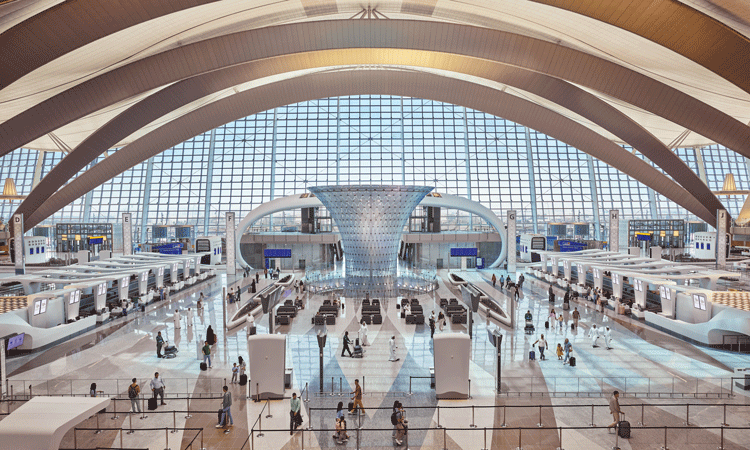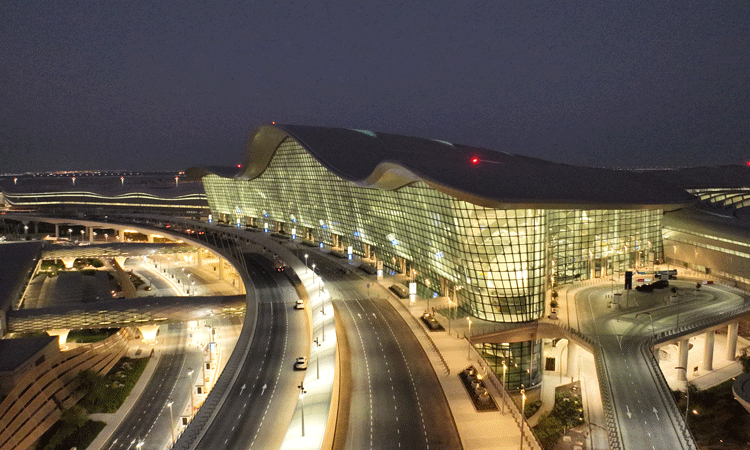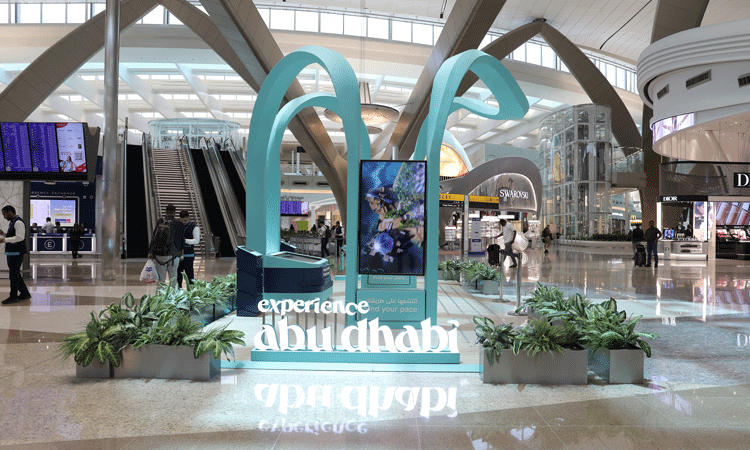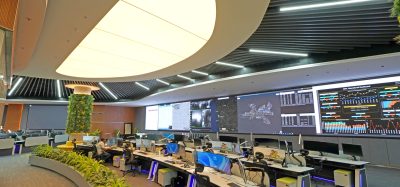Emirati culture and hospitality headline at Zayed International Airport
Posted: 25 October 2024 | Elena Sorlini | No comments yet
Elena Sorlini, Managing Director and Chief Executive Officer at Abu Dhabi Airports, shares her insight as CEO of one of the biggest airports in the world, and details how connectivity, innovation and sustainability will shape the future vision of Zayed International Airport.


c: Abu Dhabi Airports
Tell us about your aviation history and your journey to becoming a CEO of one of the biggest airports in the world.
I’ve been working in the aviation industry for about 20 years. I hold a Bachelor’s degree in Business Administration with a major in Planning and Control from Bocconi University in Italy (where I was born). Later I earned a Master’s degree in Corporate Finance and completed an Executive Master of Business Administration from Copenhagen Business School.
I’ve held executive positions globally, contributing to the growth and development of various airports and aviation-related organisations.
My career in aviation started in Aeroporti di Roma where I worked as a shareholder’s representative for Macquarie Airports. I then moved to London, where I was in charge of co-ordinating Macquarie Airports’ European portfolio strategy and in 2011, I moved to Copenhagen Airports as Strategy Director.
I moved to Oman in 2018 to be Vice President of Strategic Planning at Oman Aviation Group, where, among other things, I oversaw co-ordinating the development and implementation of a growth strategy for the entire aviation sector.
I’m currently serving as Managing Director and Chief Executive Officer at Abu Dhabi Airports; in my role, I oversee the operations, strategic planning, growth and overall management of Abu Dhabi Airports. I’m also a member of the board at Abu Dhabi Aviation, and Peninsula, contributing to shaping the strategic directions of these organisations.
What skills have been essential to your success?
My journey so far has involved strategic thinking, adaptability, effective leadership and lots of hard work. As CEO, I believe my role is to empower my team and make sure that, within the aviation ecosystem, we all work as one team. What we and government stakeholders, airlines, ground handling companies and concessionaires do at the airport is strictly intertwined and needs to be well orchestrated and aligned to unlock the growth potential of Abu Dhabi trade and tourism.
I don’t think there is a single formula that defines the path to becoming a CEO; I’d rather say that my dedication, commitment to excellence and vision played a crucial role in reaching my objectives.
Abu Dhabi International Airport recently renamed to Zayed International Airport, could you explain the reasoning behind the rename?
We are immensely proud to have been bestowed the honour of renaming Abu Dhabi’s largest airport in memory of the late Sheikh Zayed bin Sultan Al Nahyan, the founding father of the UAE.
By renaming the airport in his memory, we are celebrating his legacy and his vision for Abu Dhabi and the UAE. We are working together to make his vision a reality and are already achieving great results.
Zayed International Airport highlights the richness and diversity of Emirati culture and Arabian heritage fostered by the vision of the founding father of the UAE, to whom the new airport pays homage. We wanted to showcase Sheikh Zayed’s legacy to the visitors of Abu Dhabi, which he helped set on the path to becoming a rapidly growing centre for business, tourism and culture.


c: Abu Dhabi Airports
You will face competition from Saudi Arabia with the Kingdom’s Vision 2030; how do you see this affecting your strategy for the future?
Zayed International Airport heralds an ambitious new era of transport and aviation infrastructure for Abu Dhabi and the UAE.
In Q1 2024, Zayed International Airport served 6.8 million passengers – a 35.6% increase compared to Q1 2023. The number of travel destinations from Zayed International Airport currently exceeds 120 destinations served by 31 International airlines.
Located just an eight-hour flight from two thirds of the world’s population, Abu Dhabi has an ideal geo-location and is increasingly becoming a desirable destination for business and leisure visitors.
We do not consider ourselves competing with anyone in the region. We recognise the need to grow together and see the growth of aviation as a catalyst for further tourism growth. We are confident in our ability to cater to this growing demand for international travel and in the appeal of Abu Dhabi and the UAE as travel destinations.
Hainan Airlines will be the first Chinese carrier operating flights from Abu Dhabi airports in over a decade. Could you speak more of this relationship and the opportunities it’s set to bring?
In January 2024, Abu Dhabi Airports welcomed Hainan Airlines to Zayed International Airport, connecting the Emirate with the Chinese city of Haikou, the capital city of the province of Hainan. Hainan operates two weekly flights between Haikou and Abu Dhabi, increasing transport and trade links for passengers and cargo alike.
With trade, tourism and business ties growing between Abu Dhabi and China, the flights respond to the growing demand for air travel options between the two countries, and it will be the first time a Chinese carrier operates scheduled flights to Abu Dhabi in a decade.
The airport successfully constructed and unveiled to the public an impressive new terminal. How was it designed for seamlessness and what facilities can passengers expect?
Our main goal has always been to enhance the passenger journey and ensure the comfort and efficiency of processes to provide a unique experience for travellers.
The airport was equipped with state-of-the-art technologies to minimise times across check-in desks, passport control and security, and give passengers more time to enjoy other offerings. This has allowed us to handle 11,000 passengers per hour with a remarkable average kerb-to-gate time of 12 minutes.
Zayed International Airport hosts lounges, spas, a 138-room airside hotel, and more; about 35,000sqm have been allocated for retail space to include 163 shopping and dining outlets to diversify the airports’ offerings. Passengers will experience the best and most exclusive brands in the world: from Hermes to Balenciaga, from Bulgari to Gucci, from Ferragamo to Fendi, and many more. It’s just a matter of choosing which brand fits the traveller best.
Zayed International Airport is home to one of the largest public environmental art installations in the Middle East, the Sana Al Nour, a Barjeel structure inspired by the wind towers of the Gulf Region; it weighs approximately 100 tonnes and incorporates 1,632 curved glass panels. It stands 22 metres tall and 17 metres wide. The traditional Barjeel design facilitates an energy-saving airflow for the entire terminal building; it allows for natural light and cool air to pass through the front and top of the structure while heat rises through the middle.


c: Abu Dhabi Airports
What technology contributes to the passenger experience?
Zayed International Airport sets a new standard in airport technology by using a nine-touch-point facial recognition system providing self-check-in, self-bag drop, e-registration, e-border gate, and self-boarding services.
We introduced an advanced baggage handling system that can process up to 19,200 bags per hour, leading to an average baggage waiting time of 15 minutes.
The airport also provides an augmented reality (AR) wayfinder service, enabling real-time navigation and personalised route selection throughout the airport’s 742,000 square metres of space, with plans to introduce AR gaming, retail and F&B experiences.
Zayed International is the only airport in the region, and one of only 15 airports worldwide, to offer U.S. Customs and Border Protection (CBP) Preclearance, allowing travellers to bypass inspection lines upon arrival in the United States.
Sustainability is said to be at the heart of Zayed International Airport, how does this play out?
Sustainability is at the core of Zayed International Airport, certified as a Green Building under the Pearl Building Rating System (PBRS – a system utilisee to evaluate sustainable building development practices in Abu Dhabi) with 3 pearls at the design stage. We’ve reduced the amount of raw material used during the airport’s construction – over 90% of the steel and 82% of the timber used was sustainable. More than 70% of plants around the terminal campus are native and adaptive species that are drought and saline-resistant. Water-efficient fixtures and fittings have been installed throughout the airport, resulting in a 45% improvement over the Estidama benchmark figures. The airport also has 7,542 solar panels with a maximum capacity of 2.4 MW that contribute to an approximate reduction of 3,000 tons of CO2 per year. Since their operation began in March 2021, the panels have contributed to a reduction of 6,600 tonnes of CO2.
Why is it important the airport sets these initiatives (i.e. using recycled steel, enhancing water efficiency)?
The current state of global climate change demands that we take urgent action to fight its impact and ensure the promotion of sustainable practices. The airport was guided by a vision to preserve Abu Dhabi’s natural heritage through the efficient use of its resources. We take great pride in being an energy-efficient airport and plan to continue advancing our sustainability journey and contribute to Abu Dhabi’s leading role in the global transition.
The airport has won numerous accolades; ACI World recognised it for excellent customer service and the airport’s operator received “Airport Operator of the Year” by the World Travel Awards – congratulations on this. What would you say is your philosophy on managing a successful airport such as this one?
With the new Zayed International Airport, we wanted to reimagine the airport experience for passengers and partners alike. The new terminal is helping meet the rapidly growing demand for travel to Abu Dhabi as the Emirate strengthens its position as a destination of choice for international visitors and a strategic hub for global trade and commerce. We designed it to provide the most innovative, safe and seamless airport experience and to meet the highest standards of quality and service required by the aviation industry and the passengers.
Zayed International Airport highlights the richness and diversity of Emirati culture and Arabian heritage fostered by the vision of Sheikh Zayed, to whom the airport pays homage.
With its innovation, modern design and sustainability, Zayed International continues what Sheikh Zayed began and is at the heart of what makes the airport one of the most advanced in the world.
Emirati culture and hospitality headline the unique experience at Zayed International Airport by combining past and present to bring Abu Dhabi to the world. Designed by Kohn Pedersen Fox Associates, the X-shaped building improves operational efficiency and passenger flow. It features four themed piers, each inspired by Abu Dhabi’s natural landscapes of desert, sea, city and oasis. Each pier points in the direction of the corresponding landscape.
Zayed International welcomes its customers from all over the world by articulating the values of connectivity, innovation and sustainability. Passengers are given an authentic, inclusive traveller experience inherently rooted in the Emirati heritage of hospitality while displaying the world’s most innovative and seamless airport experience through state-of-the-art technology.
What’s next for the airport? What exciting developments can you share with us?
Since opening in November 2023, operations at the terminal have gone from strength to strength, delivering for both passengers and an increased roster of international airlines. The successful first two months of operations at the new terminal conclude what was an overwhelmingly positive year for Abu Dhabi Airports in 2023. And 2024 is poised to improve on those results: in Q1 2024, Zayed International Airport served 6.8 million passengers – a 35.6% increase in passenger numbers compared to Q1 2023. In Q1 we welcomed Hainan Airlines, and Turkmenistan Airlines returned. In late April, we welcomed daily flights from British Airways and US Bangla, and we have just welcomed Flynas’ announcement to operate nine weekly flights starting in September, enhancing our connectivity with the Kingdom of Saudi Arabia.
The strong start in 2024 encourages Abu Dhabi Airports to forecast further growth across key areas of passenger and cargo traffic, with the new Zayed International Airport central to this enhanced aviation offering.
Zayed International Airport is a global hub for tourism, trade and connectivity, and a gateway for Abu Dhabi to share its heritage with the world. The Emirates is a destination of choice for a rapidly growing number of international visitors. The new terminal is helping meet this growth in demand and unlocking the full potential of tourism and trade in Abu Dhabi.


c: Abu Dhabi Airports
Elena Sorlini has over 20 years of aviation industry experience and currently holds the position of Managing Director and Chief Executive Officer at Abu Dhabi Airports.
She is also a member of the board at Abu Dhabi Airports, Etihad Airways, Abu Dhabi Aviation and ADQ Aviation and Aerospace Services.
Ms. Sorlini has held executive positions globally in the wider aviation ecosystem, including Vice President of Strategic Planning at Oman Aviation Group and Director of Strategy at Copenhagen Airports. Prior to that, she was Vice President at Macquarie Airports, one of the largest private airport owners and operators, where she was responsible for the asset management activities of Rome Airports and Copenhagen Airports.
Ms. Sorlini holds a Bachelor’s degree in Business Administration, majoring in Planning and Control from Bocconi University, and a Master’s degree in Corporate Finance. She also holds an Executive Master of Business Administration (EMBA) from Copenhagen Business School.
Join our free webinar: Beyond silos: How ecosystem thinking elevates the airport experience
In today’s complex aviation landscape, airports are moving beyond siloed operations to embrace a new era of collaboration. This webinar focuses on how leading airports are using ecosystem thinking to adapt, personalize, and continuously improve every touchpoint, boosting both passenger satisfaction and non-aeronautical revenue.
Date: 13 Nov | Time: 10:00 GMT
REGISTER NOW TO SECURE YOUR SPOT
Can’t attend live? No worries – register to receive the recording post-event.
Issue
Related topics
Airport development, Contactless / Touchless technology, Digital transformation, Innovation, New technologies, Passenger experience and seamless travel, Passenger volumes, Route development, Sustainability, Sustainable development, Terminal operations, Tourism


















